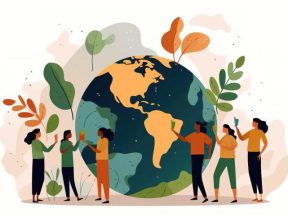From Mother Earth to Earth’s Mothers.
Mother’s Day for the year 2021 is celebrated on Sunday, May 9th. It is a time to honor mothers, grandmothers, and great-grandmothers for their contribution to family and society. What about those mothers who are the primary providers for the majority of the world’s 925 million hungry people?
Women produce 60 to 80 per cent of all food, both as subsistence farmers and as agricultural wage laborers. They are the primary providers for the majority of the world’s 925 million hungry people, obtaining food, collecting firewood and water, and cooking. And yet they have less access to land and the resources necessary to grow on it than their male counterparts. Inequitable distribution of land, labor, and resources leaves farming women triply burdened by work: in the fields, in the home, and in society.
How do the agricultural policies of international financial institutions (IFIs), such as the International Monetary Fund and the World Bank, affect women? How do the most important movement for women rights – such as Women’s Liberation Movement or Riot Grrrls – really address the situation of so many women living in poverty and supporting their family in extreme conditions?
- When the collapse of agricultural markets – often precipitated by IFI policies – forces men to leave their home and travel to other countries in search of work, women are left behind to tend to the family and work family farmland.
- IFI pressure on governments to abolish taxes on food imports and repay debts reduces governments’ ability to pay for healthcare and education. Spending cuts in these sectors inevitably cause the most harm to women and girls.
- Rising food prices put additional pressure on already strained household budgets. When women enter the formal work force to help support household consumption, girls are often forced to leave school to attend to household chores and care for younger siblings.
- IFI agriculture investments support big businesses, not women farmers. IFI investments tend to focus on agro-processing and commercial agriculture, which mainly utilize male laborers and focus on external markets. These investments tend to overlook women, who are often restricted to subsistence farming, and instead mainly benefit the transnational corporations that win IFI procurement contracts.
Nevertheless, though facing difficult challenges, women around the world hare are making strides both in national policy and in land movements themselves. In some places, they are gaining greater access to arable land, technology, credit, markets, training equipment, and control over agriculture knowledge. In certain countries, they have won the right for their name, not just their husband’s, to go on the land title, making them direct beneficiaries of land reform.
More women are directly earning wages for their agricultural labor, instead of through their husbands or fathers. Some countries are articulating women-specific labor rights in their constitutions. Not alien to this progress are the contribution of academic research, analysis and empowerment coming from enlightened women.
John Paul Pezzi, mccj



